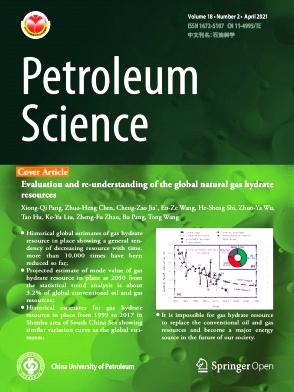Dynamic characterization of viscoelasticity during polymer flooding: A two-phase numerical well test model and field study
IF 6.1
1区 工程技术
Q2 ENERGY & FUELS
引用次数: 0
Abstract
Polymer flooding is an important means of improving oil recovery and is widely used in Daqing, Xinjiang, and Shengli oilfields, China. Different from conventional injection media such as water and gas, viscoelastic polymer solutions exhibit non-Newtonian and nonlinear flow behavior including shear thinning and shear thickening, polymer convection, diffusion, adsorption, retention, inaccessible pore volume, and reduced effective permeability. However, available well test model of polymer flooding wells generally simplifies these characteristics on pressure transient response, which may lead to inaccurate results. This work proposes a novel two-phase numerical well test model to better describe the polymer viscoelasticity and nonlinear flow behavior. Different influence factors that related to near-well blockage during polymer flooding process, including the degree of blockage (inner zone permeability), the extent of blockage (composite radius), and polymer flooding front radius are explored to investigate these impacts on bottom hole pressure responses. Results show that polymer viscoelasticity has a significant impact on the transitional flow segment of type curves, and the effects of near-well formation blockage and polymer concentration distribution on well test curves are very similar. Thus, to accurately interpret the degree of near-well blockage in injection wells, it is essential to first eliminate the influence of polymer viscoelasticity. Finally, a field case is comprehensively analyzed and discussed to illustrate the applicability of the proposed model.
聚合物驱过程粘弹性动态表征:两相数值试井模型与现场研究
聚合物驱是提高采收率的重要手段,在新疆大庆、胜利等油田得到了广泛应用。与传统的注入介质(如水和气)不同,粘弹性聚合物溶液表现出非牛顿和非线性的流动行为,包括剪切变薄和剪切增厚、聚合物对流、扩散、吸附、保留、不可达孔隙体积和有效渗透率降低。然而,现有的聚合物驱试井模型普遍简化了这些压力瞬态响应特征,可能导致结果不准确。为了更好地描述聚合物的粘弹性和非线性流动特性,本文提出了一种新的两相数值试井模型。探讨了聚合物驱过程中与近井堵塞相关的不同影响因素,包括堵塞程度(内层渗透率)、堵塞程度(复合半径)和聚合物驱前缘半径,研究了这些因素对井底压力响应的影响。结果表明,聚合物粘弹性对类型曲线的过渡流段有显著影响,近井地层堵塞和聚合物浓度分布对试井曲线的影响非常相似。因此,为了准确地解释注水井的近井堵塞程度,首先必须消除聚合物粘弹性的影响。最后,通过一个实例进行了全面的分析和讨论,以说明所提出模型的适用性。
本文章由计算机程序翻译,如有差异,请以英文原文为准。
求助全文
约1分钟内获得全文
求助全文
来源期刊

Petroleum Science
地学-地球化学与地球物理
CiteScore
7.70
自引率
16.10%
发文量
311
审稿时长
63 days
期刊介绍:
Petroleum Science is the only English journal in China on petroleum science and technology that is intended for professionals engaged in petroleum science research and technical applications all over the world, as well as the managerial personnel of oil companies. It covers petroleum geology, petroleum geophysics, petroleum engineering, petrochemistry & chemical engineering, petroleum mechanics, and economic management. It aims to introduce the latest results in oil industry research in China, promote cooperation in petroleum science research between China and the rest of the world, and build a bridge for scientific communication between China and the world.
 求助内容:
求助内容: 应助结果提醒方式:
应助结果提醒方式:


